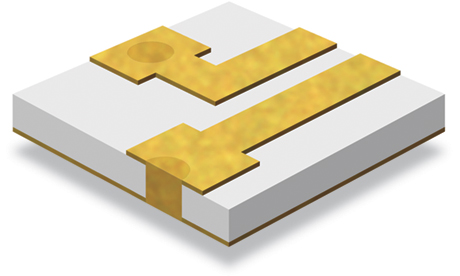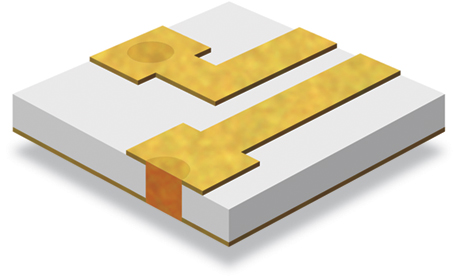Vias: Au or Cu Solid Filled
| Company | Technologies | Capabilities | Design Guidelines | Products | Other |
Introduction |
Polyimide Bridges |
Photomasks |
Standard Dimensions, Tolerances |
Inductor Coils |
Home |
Quality Assurance |
Solder Dams |
Substrates |
CAD Data Guidelines |
Inductor Coils Eng. Kit |
Contact Us |
Directions |
Laser Diode Submounts |
Material Specifications |
Material and Conversion Tables |
Microstrip Transmission Lines |
Careers |
Careers |
Vias: Plated Through |
Ion Beam |
Thermal Performance |
Transmission Lines Eng. Kits |
Terms of Use |
Sales Rep’s |
Vias: Au or Cu Solid Filled |
Aluminum Bonding Pads |
Aging Equation |
Stand Off/Isolation Pads |
Privacy Policy |
Contact Us |
Edge Wraps |
Laser Machining/Drilling |
Safe Current Limits |
ATP Bond Qualification Coupons |
|
Gold Bumping |
Backside Burnishing |
Design Resources |
Product Samples |
YouTube |
|
Fractal Fasten |
Standard Metallizations |
Packaging/Chip Trays |
|||
Integrated TaN Resistors |
Thin Film Resistor and Multi-Tap |
||||
Laser Resistor Trimming |
|||||
Serialization |





